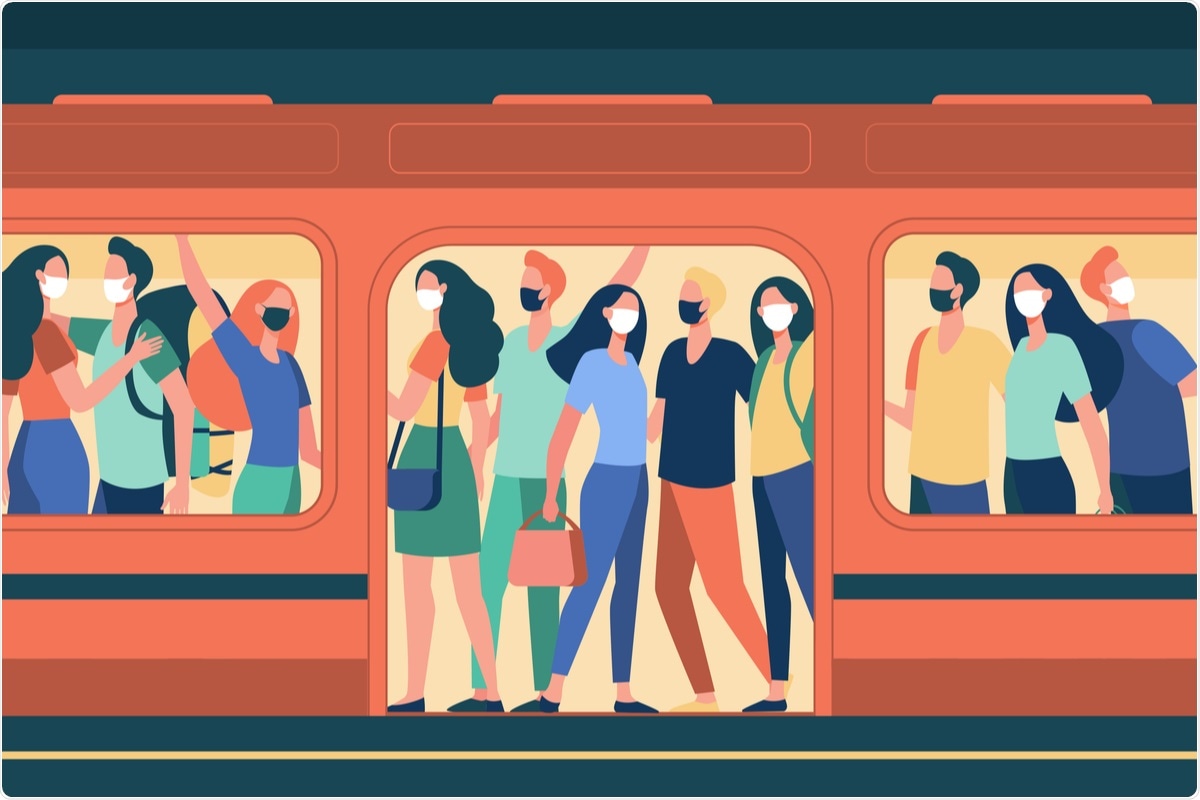Since late 2019, the world has been dealing with the coronavirus disease 2019 (COVID-19) pandemic and has been facing an overwhelming challenge of controlling the spread of the disease. In most countries in which there have been increased cases of COVID-19, local governments have implemented restrictions, such as lockdowns and social distancing, to slow the spread of the disease. Research has shown that such restrictions are imperative in reducing the spread of COVID-19.
 Study: Safe traveling in public transport amid COVID-19. Image Credit: PCH.Vector/ Shutterstock
Study: Safe traveling in public transport amid COVID-19. Image Credit: PCH.Vector/ Shutterstock
In South Korea, public transportation systems are mainly made up of buses and urban rails. However, since the pandemic began, the demand for public transport has drastically dropped. To offer the safest possible environment on public transport, the government of South Korea has issued safety guidelines, including maintaining a safe distance from others, wearing face masks, traveling at off-peak times, and avoiding crowded spaces.
However, the use of public transport is still considered high risk due to the high transmissibility associated with COVID 19, and large numbers of people are asymptomatic. Thus, high levels of anxiety regarding public transport are justified, especially in those considered vulnerable. Several studies have shown that public transport is a significant source of transmission regarding the pandemic.
The study
Close contact is typically considered the main route of transmission with COVID-19, which highlights the significance of asymptomatic individuals. Thus, it is vital to examine patterns of travel and the activities of infected individuals to protect the population better and control the spread of COVID-19.
In public transportation research, previous studies have utilized various frameworks or networks, such as Euclidean, Neural Network, and Reverse Logistics Network, to simulate the trip characteristics and travel patterns of passengers in public transportation. Another previous study used smart card data to examine the public transportation passenger encounter pattern with an Encounter Network.
In this study published in Science Advances, the authors extended this research by proposing a time-varying weighted Public Transportation Encounter Network that modeled the COVID-19 infectious process observed on public transport. The public transport trips analyzed in this study showed a repeated mobility pattern of regularity, which allowed for reproducible patterns. Therefore, the familiar stranger group (frequent encounters of public transportation users) was analyzed. The simulation performed displayed how public transportation users are frequently exposed to the virus on their trips.
Mask wearing is a recommended safety procedure in South Korea to help prevent the spread of COVID-19. However, it is mandatory in public places such as public transport. The authors tested the efficacy of the most common masks worn in South Korea by determining the number of concentrations and reduction rate before and after wearing the mask. The authors prepared a 5% TiO2 Gamble solution to mimic pulmonary fluids and viral particles and converted it to cough aerosols using a mist generator. The results from this procedure demonstrated that mask-wearing is as effective as maintaining two meters physical distance.
Large-scale events and mass gatherings can increase the spread of COVID-19 through travelers who attend such events and carry the virus to new areas. Also, in the case of large events, it can mean increased numbers and duration on public transport, which increases the number of public encounters, thus increasing the chance of COVID-19 transmission. The public encounter network demonstrated that variation in the demand for public transport based on time zone could significantly affect congestion levels. Therefore, the variation in congestion levels generated different encounter patterns in the public transportation network. Moreover, the authors of this study demonstrate that the duration of contact with infected citizens was closely related to congestion on public transport.
Implications
Close contact is typically the primary route of COVID-19 transmission, highlighting the danger associated with asymptomatic cases. A better understanding of patterns of travel may help in mitigating COVID-19 spread on public transport. The wearing of masks, while still a controversial topic, is mandatory on public transport in South Korea. The results from this study show that wearing a face mask may be as effective in preventing the spread of COVID-19 as keeping a two-meter physical distance. Mass gatherings generally result in increased numbers on public transport, so safety precautions such as masks are vital in preventing an increase in COVID-19 cases.